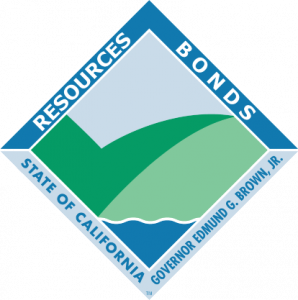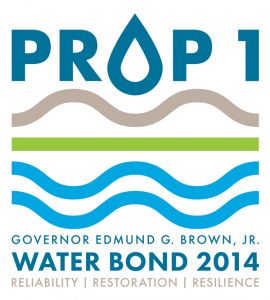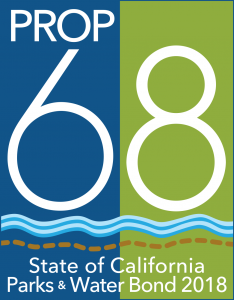Projects and Funding
Funding
The San Joaquin River Conservancy is funded from three sources: the San Joaquin River Conservancy Fund, the Environmental License Plate Fund, and several bond funds approved by state voters.
- The San Joaquin River Conservancy Fund is generated primarily from lease revenue. These funds are used for fundamental property management.
- The Conservancy receives a portion of California’s Environmental License Plate Fund. These funds are generated by the sale of environmental license plates by the Department of Motor Vehicles in support of the California Environmental Protection Program.
- State voters have authorized $102 million in 6 bond acts to be used at the Conservancy Board’s discretion on land acquisition, planning, design, permitting, and construction to implement the San Joaquin River Parkway Master Plan. Bond funds from Propositions 1, 12, 13, 40, 68, and 84*, as well as grants and donations, provide funding for the Parkway’s capital improvement projects. The California Wildlife Conservation Board assists the Conservancy in administering bond funds and associated grants.
Public and Stakeholder Involvement
For information about public workshops and opportunities to comment on proposed projects and plans, please contact the Conservancy.
The Conservancy is committed to communicating with California Native American Tribes and tribal communities to secure meaningful input into the development of regulations, rules, policies, projects, and plans that may affect cultural resources and other tribal interests. Although we follow the California Natural Resources Agency’s Tribal Consultation Policy, the Conservancy is interested in being proactive in our relationships with local tribes. If you have any thoughts, please contact the Conservancy.
Land Acquisition
Acquiring lands for conservation and recreation in the Parkway from willing sellers continues to be the highest priority for investing bond funds to develop the Parkway. Interested landowners may contact the Conservancy’s Executive Officer, see Contact Us.
Recent Projects
RIVER WEST- FRESNO EATON TRAIL EXTENSION
In September 2021, the Conservancy Board authorized bond funds, not to exceed $3,104,831, to the City of Fresno to begin and complete final engineering designs and secure permits for the River West Fresno Eaton Trail Extension Project (Project). The Project will extend the existing Lewis S. Eaton Trail approximately 2.4 miles starting at the Perrine Avenue alignment near Highway 41 and ending at the City of Fresno’s Spano Park. The trail will be 22 feet wide, with a 12-foot-wide paved surface, a parallel eight-foot-wide hard natural surface for equestrian use, and a two-foot shoulder. In addition to the trail system, the Project will include three access points with parking lots- Perrine Avenue, Riverview Drive, and North Palm Avenue.
On November 18, 2021, the Wildlife Conservation Board approved the project and a grant agreement with the City of Fresno. A notice to proceed for the grant agreement was issued on January 7, 2022.
The Project is currently being designed by the City of Fresno, through their consultant Provost and Pritchard.
SJRC River West Fresno, Eaton Trail Extension Project – San Joaquin River Conservancy
RIVER WEST-FRESNO AUDUBON TRAFFIC MITIGATION
The Conservancy partnered with the City of Fresno for the installation of a traffic light at the intersection of Del Mar and Audobon. With the installation of the traffic light, we celebrate a milestone in improving safe access to the River West – Eaton Trail Extension Project, which is a priority project for opening to the public for both recreation and river access. We look forward to continuing our work with the City of Fresno to provide safe access for all to River West, the Eaton Trail, and the San Joaquin River Parkway.
RIVER WEST-MADERA
Consistent with the goals, objectives, and policies of the San Joaquin River Parkway Master Plan, the River West-Madera Master Plan is intended to provide a roadmap for implementation of the Parkway Master Plan as it relates to the project area. The River West-Madera Master Plan aims to further four main objectives for the project area: habitat restoration, public access, recreation, and outdoor education. The Master Plan also provides guidance regarding the implementation of Parkway Master Plan objectives.
JENSEN RIVER RANCH PHASE II HABITAT RESTORATION
The Conservancy has granted funds to the San Joaquin River Parkway and Conservation Trust to create new wildlife habitat at the Conservancy’s 167-acre Jensen River Ranch. The project will eradicate weeds, develop a revegetation plan, plant native trees and shrubs, and irrigate the plants until they are self-sufficient. The project lies immediately north of Woodward Park near the San Joaquin River in Fresno County and can be viewed from the Tom McMichael Sr. Trail. Volunteers to help with the planting are welcomed, see Partners. ($563,970; Proposition 40)
LOST LAKE PARK CAMPGROUND IMPROVEMENTS
The Conservancy has awarded funds to the County of Fresno to renovate the campground at Lost Lake Park. This project will improve recreational vehicle and tent camping facilities, redesign the layout of the camping area, rehabilitate or replace existing picnic shelters, tables, and fire pits as necessary, and make some campsites ADA accessible. Lost Lake Park continues to be the primary park providing recreation on the San Joaquin River in Fresno and Madera Counties. ($1,403,000; Proposition 40)
RIVER VISTA PLANNING AND ENVIRONMENTAL REVIEW
The Conservancy has contracted with the County of Madera to carry out the River Vista Planning and Environmental Review project. The goal of the project is to open the site for fishing, nature observation, picnicking, paddling and other similar activities. Proposed improvements include a gravel parking area, restroom, hiking trail, and picnic tables. The project study area includes approximately 150 acres in Madera County along the San Joaquin River immediately west of the Road 206 crossing. The future River Vista park will provide high-quality access to the river for the community of Friant and for visitors throughout the region. ($180,000; Proposition 40)
RIVERBOTTOM PARK AND SCHNEIDER PROPERTY HABITAT RESTORATION
The Conservancy has granted funds to River Partners to restore 147 acres located on the City of Fresno’s Riverbottom Park property located adjacent to the Santa Fe Railroad and the Conservancy’s Schneider property located in the same vicinity, in Madera County. Both project sites are within the floodplain of the San Joaquin River. The project will establish native plants and remove invasive weeds. Irrigation will be installed as needed to ensure plant survival. The project will provide critical breeding, roosting, and foraging habitat for nesting songbirds, woodpeckers, raptors, and water birds. Volunteers to help with planting are welcomed, see Partners. ($704,450; Proposition 40)
SAN JOAQUIN FISH HATCHERY PUBLIC ACCESS AND TRAIL
The Conservancy awarded a grant to the Department of Water Resources to construct a section of the San Joaquin River Parkway Trail on California Department of Fish and Wildlife state owned property. The funds will be utilized to construct the Parkway Trail along side of the San Joaquin Fish Hatchery connecting to Lost Lake Park. Drinking water, rest areas, bike racks, solar lighting, outdoor seating area, trail bridge, and a parking area will also be constructed. The trail will lead to the San Joaquin River providing river access. The completed project creates the Friant Interactive Nature Site (FINS), and the Parkway Trial provides the link for visitors to access the trout hatchery, the river, the Small Fry Children’s Trail, picnic areas, the neighboring Fresno County Lost Lake Park, the Salmon Conservation and Research Facility, as well as California native vegetation and wildlife viewing opportunities. ($2,230,000; Proposition 84)
SPANO RIVER RANCH, HABITAT ENHANCEMENT, PLANNING AND DESIGN
In collaboration with River Partners and the San Joaquin River Parkway and Conservation Trust, this Conservancy-funded project will plan, study, and complete required environmental reports to restore a portion of the Spano River Ranch site (River West – Fresno) to its historically rich biodiversity. The project is expected to result in increased habitat diversity, protect and improve the water quality of the pond onsite, and increase riparian and woodland habitat for wildlife. This project will be designed to complement other recreational uses being planned for the site. ($207,000; Proposition 40)
SYCAMORE ISLAND ACCESS ROAD CONSTRUCTION AND POND ISOLATION, PLANNING AND DESIGN
The Conservancy has contracted with the California Department of Water Resources to isolate a pond from the river on the northern edge of Sycamore Island. The project will reestablish a berm and road to connect Sycamore Island and the Conservancy’s Van Buren Unit. This project will develop the conceptual and preliminary designs, analyses, and environmental review in compliance with CEQA, biological surveys and permit documents, and produce final engineering designs. When complete, the project will provide for improved management, improved river environmental conditions, and increased public recreation. ($232,000; Proposition 40)
CEMEX ROCKFIELD MODIFICATION PROJECT
As presented in the DEIR, the Project will continue and modify its current aggregate (rock, sand and gravel) mining and processing operations located on two properties (Plant Site and Quarry Site) between North Friant Road and the San Joaquin River, in Fresno County. The current mining and processing operations have been continuous at the two sites for 108 years.
Bonds
The Conservancy’s bond funds are appropriated in the California Wildlife Conservation Board’s (WCB’s) budget. Any acquisitions, improvements, or grants using these funds are at the direction of and require approval by the Conservancy, as well as the WCB. Visit WCB San Joaquin River Conservancy Page for more information about our grant program.
Please visit the San Joaquin River Conservancy – California Grants Portal to find out more about grant opportunities.
Remaining Funds that are specifically allocated to the Conservancy to provide for Parkway capital development have been included in the following voter-authorized bonds:
Prop 40: Clean Water, Clean Air, Safe Neighborhood Parks, and Coastal Protection Act of 2002

Approved by the voters in March 2002, Prop 40 included an additional $25 million for Parkway land acquisitions and public access and recreation projects.
Prop 84: Safe Drinking Water, Water Quality and Supply, Flood Control, River and Coastal Protection Bond Act of 2006

Prop 84 included $36 million for the Conservancy to acquire property and provide for habitat enhancement, public access, and recreation.
Prop 1: The Water Quality, Supply, and Infrastructure Improvement Act of 2014

The Water Quality, Supply, and Infrastructure Improvement Act (Proposition 1, 2014) included $10 million for San Joaquin River multi-benefit ecosystem and watershed protection and restoration projects implemented by the Conservancy (PRC §79731(g)). The bond fund allows the Conservancy to carry out local assistance and capital outlay projects associated with watershed climate change adaptation, river parkway restoration, state obligations of the SJR Restoration Program settlement, reducing wildfire risks and surface water pollution, and other projects consistent with Proposition 1, statewide priorities, and the Conservancy’s mission and plans.
Prop 68: California Drought, Water, Parks, Climate, Coastal Protection, and Outdoor Access For All Act of 2018

Proposition 68 is codified in the Public Resources Code and the Water Code. Proposition 68 authorizes $4 billion in general obligation bonds to finance a drought, water, parks, climate, coastal protection, and outdoor access for all program and includes $6 million for the San Joaquin River Conservancy. The Conservancy’s Proposition 68 Grant Program Guidelines are still being finalized and will specifically pertain to grants funded by Proposition 68 and administered by the Conservancy.
| Bond Number | Bond Year | Bond Name | SJRC Funds (original) | Approximate Remaining Funds |
|---|---|---|---|---|
| Prop 12 | 2000 | Safe Neighborhood Parks, Clean Water, Clean Air, and Coastal Protection Bond Act | $15,000,000 | - |
| Prop 13 | 2000 | Safe Drinking Water, Clean Water, Watershed Protection, and Flood Protection Act | $10,000,000 | - |
| Prop 40 | 2002 | The California Clean Water, Clean Air, Safe Neighborhood Parks, and Coastal Protection Act of 2002 | $25,000,000 | - |
| Prop 84 | 2006 | Safe Drinking Water, Water Quality and Supply, Flood Control, River and Coastal Protection Bond Act | $36,000,000 | $996,334.87 |
| Prop 1 | 2014 | Water Quality, Supply, and Infrastructure Improvement Act of 2014 (Proposition 1, 2014) | $10,000,000 | $5,811,088.43 |
| Prop 68 | 2018 | California Drought, Water, Parks, Climate, Coastal Protection, and Outdoor Access For All Act of 2018 | $6,000,000 | $5,550,000.00 |
| Total | $102,000,000 | $12,357,423.30 |

